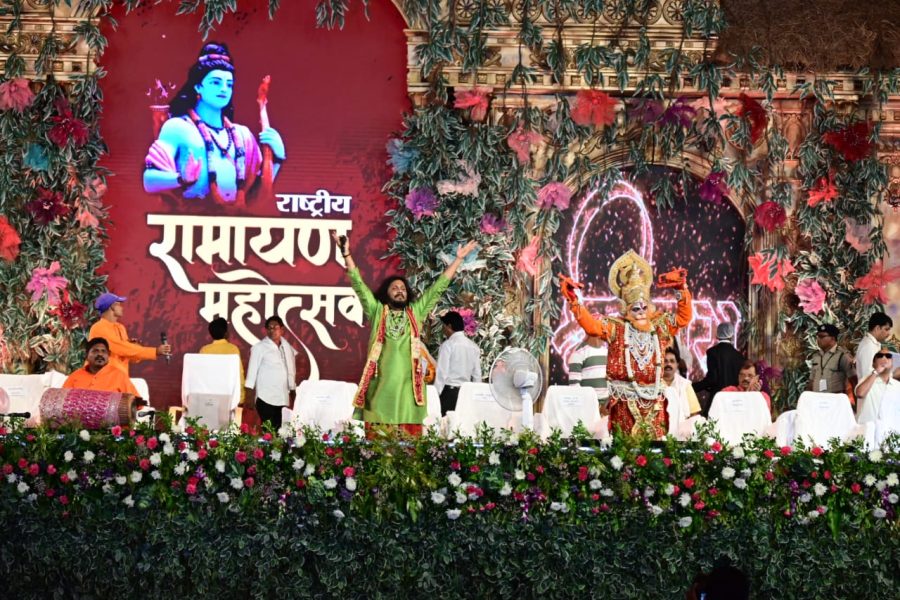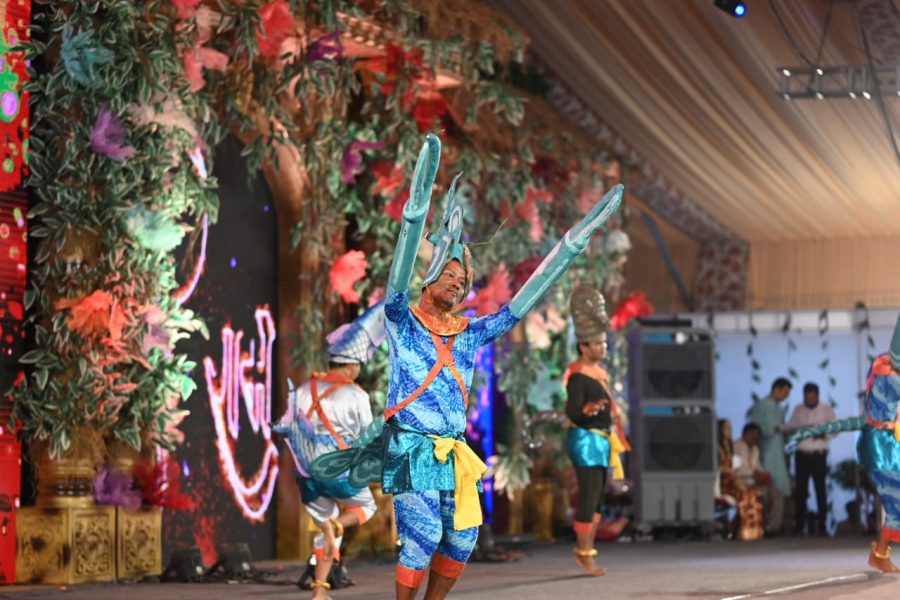
How Congress is using Ramayan to counter BJP’s Hindutva narrative in Chhattisgarh

The Bhupesh Baghel-led Congress government in Chhattisgarh has found a potent weapon in ‘soft Hindutva’ to counter the hard-line Hindutva narratives of the BJP ahead of the Assembly polls later this year. The latest one is a three-day-long Ramayan Festival that seeks to trace the state’s roots to the Hindu epic and claim legacy of Lord Rama.
Chief Minister Bhupesh Baghel on Thursday (June 1) inaugurated the National Ramayan Festival at the Ramleela Ground in the industrial city of Raigarh. The central theme of the festival, which will witness dance-drama performances of ‘Ramkatha’ by Indian and international artistes, is based on the ‘Aranya Kand’, the third book of the Ramayan, which chronicles the journey of Lord Rama, his wife Sita and brother Lakshman’s 14-year exile in the forest.
Also read: Babies to learn lessons from Ramayana, Gita in the womb under RSS arm’s new campaign
Interestingly, the use of the particular chapter, found both in Tulsidas Ramcharitmanas and the Valmiki Ramayan, as a central theme is significant as Lord Rama is believed to have spent almost 10 years of his 14-year exile in Dandakaranya, parts of which fall under Chhattisgarh now.
Troupes from Cambodia, Indonesia and 12 Indian states are participating in the Ramayan Festival. Delegations of Ramayan ‘tableau display’ teams from various states are also the centre of attraction in this competition-based programme.
Chhattisgarh’s Ramayan connect
The kingdom of Dakshin Kaushal mentioned in the Ramayana as the birthplace of ‘Mata Kaushalya,’ the mother of Lord Rama is believed to be the Chhattisgarh of present day. Known for her generosity, knowledge, and affection for Lord Rama, Mata Kaushalya is worshipped in many places as a symbol of motherly love across the state. Chhattisgarh is also the only state where a temple dedicated to Mata Kaushalya has been established (in Chandkhuri).
Legends of Lord Rama’s exile in Dandakaranya can also be heard across various places in the state, which also has several temples and religious shrines dedicated to the Hindu god.
This region is also considered to be the residence of many tribal communities, which have preserved the culture and traditions of their ancestors for centuries.
Also read: Kamban’s Ramayanam holds sway over Valmiki’s text in Southeast Asia
It is also believed that Lord Ram had spent the majority of his exile near the banks of the rivers Shivnath and Mahanadi, the two major rivers in Chhattisgarh.
Common Hindu roots
The government’s attempt to show the Hindu roots that India shares with South Asian countries like Cambodia and Indonesia is evident as artistes from these countries have been invited to perform their versions of the Ramayan at the festival. For the uninitiated, the famous Angkor Watt Temple in Cambodia and the Java Temple in Indonesia have motifs from the Ramayan.
Artistes from these countries have preserved their legacy by exhibiting Ramkatha in their respective art forms. Seeing these art forms during the Ramayan Festival would be a mesmerizing experience for the audience.

On each of the three days of the festival, there will be a group recitation of the Hanuman Chalisa. Kelo Maha Arti and Deep Daan will be organised for the closing ceremony.
The three-day event will feature daily performances by eminent artistes and performers. While Indian Idol and Saregama contestants Shanmukha Priya and Sharad Sharma were invited to perform on the opening day of the festival, June 2 will see performances by famous singers Baba Hansraj Raghuvanshi and Lakhbir Singh Lakha. Noted bhajan singer Maithili Thakur and popular poet Kumar Vishwas will present their renditions of the story of Lord Ram on June 3.
Also read: Ramayan Express changes staff’s saffron uniform after seers protest
‘Ram Van Gaman Path’
The Congress government had earlier launched ‘Ram Van Gaman Path’ to develop sites where Lord Rama is believed to have left his footprints during his journey from Ayodhya to Lanka (believed to be current day Sri Lanka). A total of 51 places have been identified as spots which Lord Rama graced during his exile. Located between Sarguja to Bastar, all of them would be developed in several phases.
Eight of the places which are being developed in the first phase are Chandrakhuri (Raipur), Sheorinarayan (Janjgir-Champa), Sitamadhi-Harchowka (Koria), Ramgarh (Surguja), Turturia (Balodabazar-Bhatapara), Rajim (Gariaband), Sihava (Dhamtari) and Jagdalpur (Bastar).
Also read: Rambhakts to memebhakts: Millenial version of 90s Ramayan nostalgia

